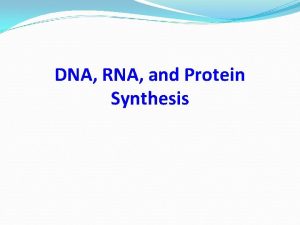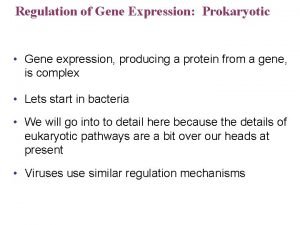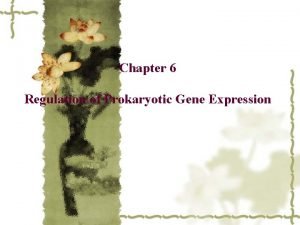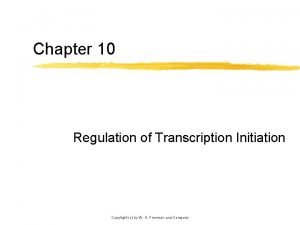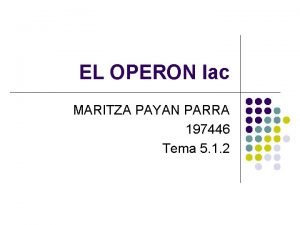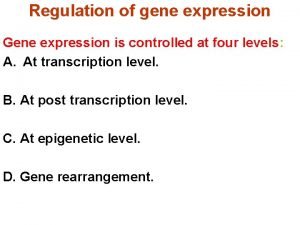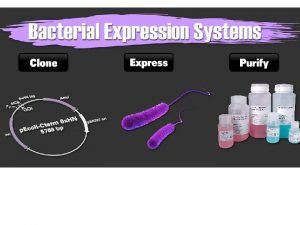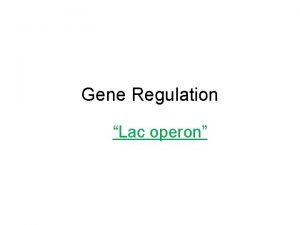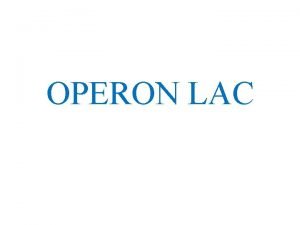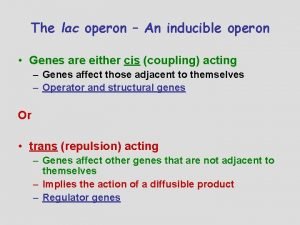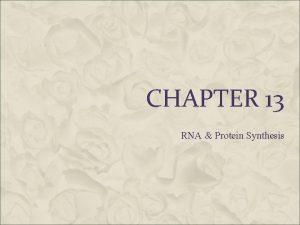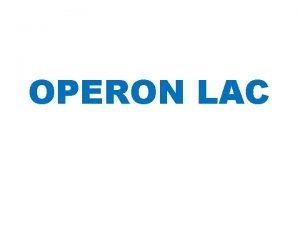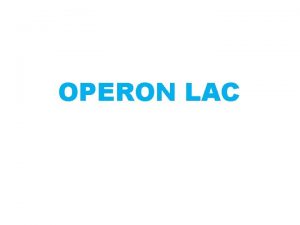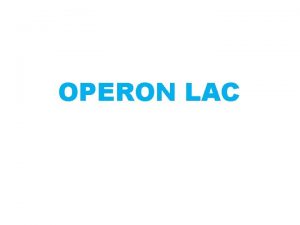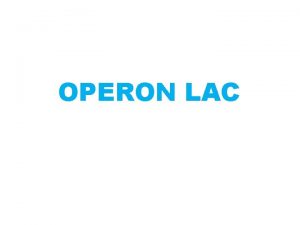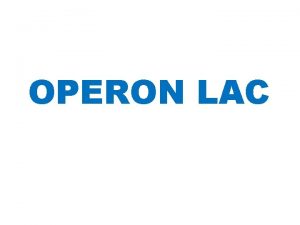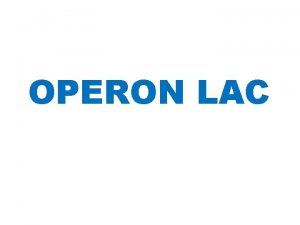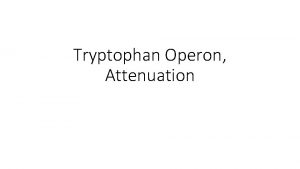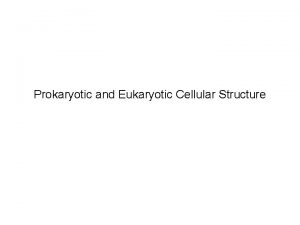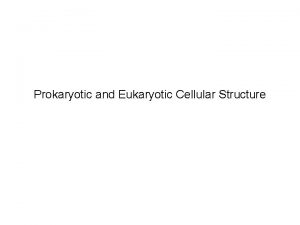Prokaryotic Regulation trp Operon lac Operon Eukaryotic Regulation














- Slides: 14

Prokaryotic Regulation trp Operon lac Operon Eukaryotic Regulation Transcriptional Control Posttranscriptional Control Translational Control Posttranslational Control Genetic Mutations Cancer

Pg 252 Operator Operon consist of three components Promoter. Genes Structural DNA sequence where RNA polymerase first attac 2

Prokaryotic Regulation: The Operon Model • Operon consist of three components • Promoter • ___________ • Operator • __________ • Structural Genes • _____________________________ • ________________

The trp Operon 4

Repressible Operons: The trp Operon • The regulator codes for a repressor • If tryptophan (an amino acid) is absent: • __________________(expression is normally “on”) • _____________________________________________________ • If tryptophan is present: • _____________________________________ • ___________________

The lac Operon 6

Inducible Operons: The lac Operon • The regulator codes for a repressor • If lactose (a sugar that can be used for food) is absent: • __________________________ • If lactose is present: • _____________________________ • _______________

Negative vs Positive Control 1. Negative Control - Active repressors shut down activity of an operon 2. Positive Control - when CAP molecule is active, it promotes activity of operon. • Use of both positive and negative controls allows cell to fine-tune its control of metabolism. 8

Eukaryotic Regulation • A variety of mechanisms • Five primary levels of control: • Nuclear levels • _______________________ • ____________ • Cytoplasmic levels • _______________________

Regulation of Gene Expression: Levels of Control in Eukaryotes Five primary levels of control: Nuclear levels Chromatin Packing Transcriptional Control Posttranscriptional Control Cytoplasmic levels Translational Control 10 Posttranslational Control

Chromatin Packing • Euchromatin • _________________ • Heterochromatin • _________________ 12

• Posttranscriptional control operates on primary m. RNA transcript • Given a specific primary transcript: • Excision of introns can vary • Splicing of exons can vary • Determines the type of mature transcript that leaves the nucleus • May also control speed of m. RNA transport from nucleus to cytoplasm • Will affect the number of transcripts arriving at rough ER • And therefore the amount of gene product realized per unit time

• Posttranscriptional control operates on primary m. RNA transcript • Given a specific primary transcript: • Excision of introns can vary • Splicing of exons can vary • Determines the type of mature transcript that leaves the nucleus • May also control speed of m. RNA transport from nucleus to cytoplasm • Will affect the number of transcripts arriving at rough ER • And therefore the amount of gene product realized per unit time

Post-Translational Control • Posttranslational Control begins once a protein has been synthesized • Some Proteins are not immediately active after synthesis. • Cleaving and recombining • Some proteins are short-lived • Degraded and Destroyed (Proteasomes) 16
